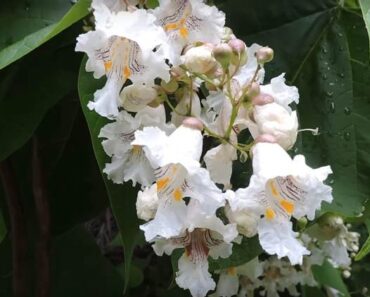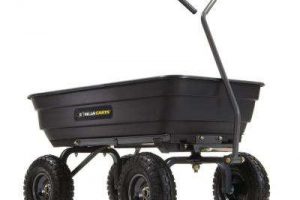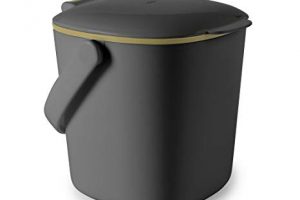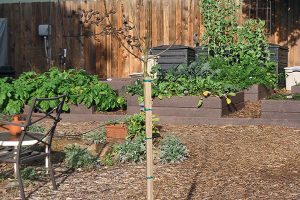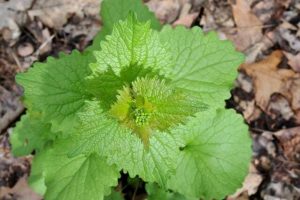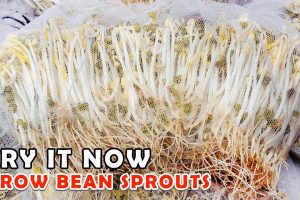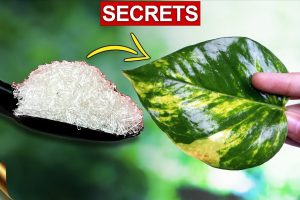
by Bethany Hayes
Everyone thinks about garden pests and the insects that infect your vegetable plants, but fruit tree pests are just as destructive and prey on all those homegrown fruits you love so much. Worse of all, they often are more challenging to get rid of because they bury themselves in the bark – so frustrating!
Dealing with any pest is annoying, but fruit trees are an investment. Whether you have a small home orchard or run a full-scale orchard, fruit tree pests deplete your harvest, and in some cases, destroy trees entirely.
There are hundreds of different fruit tree species – it’s impossible to know or cover them all – but some are more common than others. So if you plan to grow fruit trees, know your potential pests!
10 Common Fruit Tree Pests
1. Aphids – Fruit Tree Species
Aphids are among the most common fruit tree pests and garden pests; they seem to infect all plants without discrimination. That means you need to be ready to tackle these pests if they find your fruit trees.
There are different types of aphids, and they affect your fruit trees in different ways. No matter the species you have in your garden, aphids lay eggs in the winter, but the location on your tree differs. The problem is that aphids are pretty small, so it’s hard to spot unless you have a large infestation.
It’s important to note that aphids aren’t a huge problem unless you have a large infestation. The signs of an aphid problem include:
- Curled leaves
- Honeydew – sugary, sticky substance that the aphids leave as waste
- Reduced tree health
- Deformed, aborted fruit
The biggest problem with fruit tree aphids is the same problem with vegetable plants. Aphids feed on the sap of the fruit tree’s leaves, leaving behind honeydew. Honeydew attracts ants and sooty mold, which are other problems you may experience.
Controlling aphids on fruit trees is similar to your garden beds. Spray them off the undersides of the leaves with a strong water jet. You can also release beneficial insects that feed on aphids, such as ladybugs and lacewings.
If you have a nasty infestation, you’ll need to use insecticidal soaps or horticultural oil, such as neem oil, to get rid of them.
2. Apple Maggots
Apple maggots may be small insects, but they can cause many problems for your apple – and other – fruit trees. These destructive insects also attack plum, apricot, pear, and cherry fruit trees in your backyard orchard. They cause tiny pinpricks or pitted areas on the surface of the fruits, along with brown trails throughout the flesh.
Gross!
Apple maggots are small insects with transparent wings, and their larvae are white, tapered maggots that like to tunnel through the fruit flesh. One of the problems with these pests is that they overwinter in the soil, emerging in the spring to cause havoc in your garden.
Here are some signs of an apple maggot infestation.
- Pitted and misshapen fruits
- Holes in the fruits
- Discolored and broken down pulp
- Tunneling larvae
Controlling apple maggots is essential unless you want to lose all of your fruits. The first thing you have to do is collect any fallen fruits and consider setting traps in the canopy of your trees to catch the egg-laying adults.
Consider releasing beneficial nematodes into your garden; they love to hunt and eat the pupal stage of the apple maggots. The last resort control method is to use fast-acting botanical insecticides, but many insecticides kill off the good insects you want to have, so use this option sparingly.
3. Codling Moth
Codling moths love apple and pear trees the most, but they often attack other varieties. They lay eggs on the fruits of the trees, tunneling inside of them and feeding on the seeds. Unfortunately, that means you lose your harvest nearly entirely if you have an infestation of codling moths.
These pests are most common in southeastern and central Minnesota, but they will find other areas to infect backyard orchards. Keeping your trees and orchard free of debris goes a way to keep codling moths out of your fruit orchard.
These pests are medium-sized and light brown. The males have a band of shiny coppery scales that make them easy to identify.
The symptoms of an infestation of codling moths include:
- Visible entry and exit holes
- Tunneling into the fruit flesh
- Fruit that drops off the tree prematurely
It’s possible to get rid of these fruit tree pests!
The first step is removing fallen apples because it gives the adults places to lay their eggs. After that, the best way to get rid of these pests is to use traps using waxed-paper traps hung in trees. Pesticides are an option; look for chemicals that include spinosyn, carbaryl, and malathion.
4. Greater Peachtree Borer
Despite the name greater peachtree borer, these pests infest more than just peach trees. They also infect nectarine, apricot, plum, and cherry trees. Greater peachtree borers are tiny, clear-winged moths that lay eggs at the base of fruit tree trunks.
Once the eggs are laid, the larvae hatch and bore into the tree trunks. Young trees or trees with damage and stress already won’t be able to survive this. Older trees will quickly show signs and symptoms of a greater peachtree borer infestation, such as:
- Loose, dead bark
- Holes at the soil line
- Oozing sap with frass – small, pellet-like insect excrement
- Yellow and wilted leaves.
If you have young fruit trees, your first goal is to protect them from peachtree borers. Small orchards can use preventative trunk sprays as the primary control and always work towards keeping your trees in good health.
Few insecticides are listed to help these pests, but you can insert a wire into entry holes to kill the larvae inside the trunks. The best time to kill them is in the late summer and fall. Always keep vegetation away from the base of your fruit trees!
5. Japanese Beetles
It’s easy to spot Japanese beetles on your fruit trees, and these pests are known for being highly destructive. They eat anything in its path.
Japanese beetles are around ½ long, oval-shaped, metallic green with bronze wings; they are easy to recognize. The adult beetles lay eggs in the soil throughout the spring, and soon, the larvae – white grubs – feed on the plant roots. Once they become adults, the beetles feed on the soft tissue in the leaves, resulting in skeletonized leaves.
Spotting the adults isn’t tricky, but you may not realize there is trouble under the soil’s surface in the form of grubs. Here are some signs of a Japanese beetle infestation.
- Skeletonized leaves
- Brown patches in your lawn
- Weak root systems
Getting rid of Japanese beetles isn’t as hard as you might think. Start by handpicking all of the beetles you see and dropping them into a hot, soapy water bucket. It may take time, but it’s highly effective.
After that, spray your trees with neem oil. Once the adult beetles ingest neem oil, the larvae die. Sometimes, insecticides are needed, but some home orchardists prefer a homemade insecticide made with dish soap, vegetable oil, and rubbing alcohol.

6. Leafhoppers
Leafhoppers are among the worst pests for apple trees, and they breed fast. Each year, two generations appear on your trees. These are leaf-sucking pests that feed on your apple tree leaves, causing white stippling on the leaves. If you have a heavy infestation, you may reduce the fruit size, and the tree is weaker overall.
There are a few ways to determine if you have a leafhopper infestation.
- White stippling on leaves
- Smaller fruits
- Black specks on the fruits
- Honeydew droplets
In recent years, leafhoppers have become resistant to insecticides containing organophosphate. It’s possible to treat them still, but make sure you follow the directions. You’ll need to apply several treatment applications to get a hold of the population.
7. Leafrollers
Leafrollers are the larvae of tortricid moths, and they feed on our fruit trees. They roll up leaves with their silk and hide inside while they feed. This hides the insects from predators, but it also harms the tree.
A few leafrollers won’t cause much damage to your tree, but if you end up with a large infestation, leafrollers can completely defoliate a tree in a single growing season. Then, the adult moths lay eggs on the bark surfaces in the late fall, continuing their life cycle. The eggs overwinter, hatching in the early spring and feeding throughout the summer until they become eggs and start laying eggs.
Here is how to spot a leafroller infestation.
- Ragged leaf appearance
- Rolled leaves
- Defoliation of plants under the tree
- Fruit falling prematurely
- Deformed fruits
If you end up with some leafrollers on your fruit trees, you can release some beneficial insects, such as tachinid flies and parasitic wasps, that will eat the pests you don’t want. Lacewings also are a great predator!
Rarely is chemical control required for a leafroller infestation, but if that happens, apply it where there is evidence of a leafroller population. One of the best sprays to use on a leafroller population is Bacillus thuringiensis, which is effective against the larval stages.
8. Oriental Fruit Moth
The oriental fruit moth originates in China, and they were introduced over a century ago to the United States. These pests prefer peach and nectarine trees, but they also attack quince, apricot, plum, cherry, and pear trees. In addition, these pests may attack apple trees in some areas, especially in the eastern states.
Oriental fruit moths overwinter as fully grown larva in silk webbing, and they pupate in the spring. The adults lay eggs on the foliage, and each female produces around 200 eggs. So in one season, expect two to three generations to cycle through your fruit trees if you don’t control the oriental fruit moth population.
It’s important to know signs of an infestation; here is what you need to look for.
- Tip of the shoots dying
- Deformed fruits
- Tunnels into the center of the fruit
- Wilted twigs
There are several ways to get ahold of oriental fruit moths. Pheromone traps work to control adult moths; they work best when put into your fruit orchard before the trees bloom. You can also release braconid wasps, which are leafroller and oriental fruit moth predators.

9. Peach Twig Borer
Here is another common fruit tree pest that takes over peach trees, along with nectarine, apricot, and plum trees. These frustrating little pests like to tunnel into the shoots of budding trees and eat the fruit later in the season.
Spring and summer are when these pests are the most active, and each year leads to multiple generations. So if you have a big population early in the spring, you can end up with substantial damage!
Sometimes, it’s hard to spot these little pests until they have caused some real problems. Here are some classic signs of a peach twig borer infestation:
- Wilted twigs
- Gum seeping from tunnel openings
- Frass at the start of tunnels
If you figure out you have a peach twig borer problem, the first thing you can try to do is place a pheromone lure to trap the adults. The best time to place them is in the early spring, when the pests are just becoming active in your orchard.
If that doesn’t work, you have other options. Pruning off the shoot strikes helps to prevent the larvae from entirely developing. Replacing parasitic wasps and ants can take down the larvae, or you also can use timed applications of insecticides.

10. Western Cherry Fruit Fly
Those growing cherry trees may have to contend with the western cherry fruit fly. This pest loves to bother sweet, tart, and wild cherry tree species, so nothing is safe!
Extreme infestations are easy to spot; maggots end up in every cherry on the tree. Smaller infestations take a bit of investigating to spot. Some of the common signs of a western cherry fruit fly infestation include:
- Small holes in the fruit
- Larvae float when you soak them in water
- Collapsed fruits
The good news is they only complete one generation per year, so an infestation moves slower than other fruit tree pests. They overwinter in the soil as pupa, emerge in the spring, and start causing destruction. However, these pests are hard to monitor, and traps don’t work too well.
Another option is to release parasitic wasps; they attack the larvae, but this won’t be enough to control the population if you have a large orchard. You’ll have to release chemical control sprays every 7 to 10 days to eliminate all of the flies!
Conclusion
These ten fruit tree pests can cause severe damage to your trees if left to grow and populate without control methods. Make sure you pay close attention to your trees to spot damage and issues quickly. Fast treatments will knock out an infestation fast!

The post 10 Common Fruit Tree Pests & How to Fight Them appeared first on Gardening Channel.


